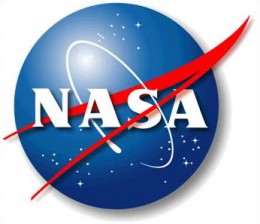WASHINGTON—NASA’s Curiosity rover is on target to arrive on Mars on August 6 for a two-year mission to find out whether microbial life once existed on the Red Planet, the US space agency said Monday.
Landing the car-sized rover is of course no easy task, NASA scientists say.
“The Curiosity landing is the hardest NASA mission ever attempted in the history of robotic planetary exploration,” said the associate administrator for NASA’s Science Mission Directorate in Washington, John Grunsfeld.
“While the challenge is great, the team’s skill and determination give me high confidence in a successful landing,” Grunsfeld said in a statement.
Curiosity, which NASA scientists have described as a $2.5 billion dream machine, launched from Florida’s Cape Canaveral in November 2011, and aims to land in Mars’ Gale Crater near Mount Sharp at 0531 GMT on August 6.
The rover, which has six wheels and weighs nearly a ton (900 kilograms), is nearing the end of its 354-million-mile (570 million-kilometer) trek through space.
The vessel transporting Curiosity will glide through the planet’s upper atmosphere, instead of “dropping like a rock” onto Martian soil, in order to ensure as secure and precise a landing as possible.
NASA mission directors say that unlike previous probes, Curiosity is too heavy to sustain an impact cushioned by airbags.
Instead, engineers at NASA’s Jet Propulsion Laboratory (JPL) in Pasadena, California say they have opted for a “sky crane” method — a “backpack with retro-rockets” controlling speed will gently deposit Curiosity on Mars.
In the seven minutes prior to landing, the spacecraft carrying the rover will decelerate from about 13,200 miles per hour to just 1.7 miles per hour, slowed by a giant parachute.
“Those seven minutes are the most challenging part of this entire mission,” said the JPL’s Mars Science Laboratory project manager, Pete Theisinger.
“For the landing to succeed, hundreds of events will need to go right, many with split-second timing and all controlled autonomously by the spacecraft,” Theisinger added.
“We’ve done all we can think of to succeed. We expect to get Curiosity safely onto the ground, but there is no guarantee. The risks are real.”
In June, NASA reported it had narrowed the landing ellipse — now four miles wide by 12 miles long instead of 12 miles wide and 16 miles long — to allow Curiosity to arrive at Mount Sharp several months earlier.
Curiosity is two times longer and five times heavier than the two preceding Mars rovers, Spirit and Opportunity, and is equipped with 10 scientific instruments.
Carrying a nuclear generator, it has a mast with high-definition cameras and a laser to study targets at a distance of up to seven meters.
